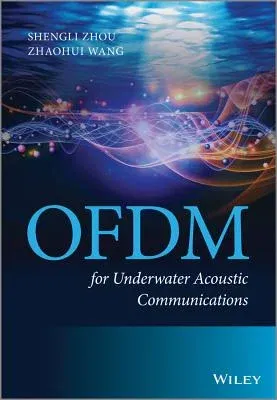A blend of introductory material and advanced signal processing and
communication techniques, of critical importance to underwater system
and network development
This book, which is the first to describe the processing techniques
central to underwater OFDM, is arranged into four distinct sections:
First, it describes the characteristics of underwater acoustic channels,
and stresses the difference from wireless radio channels. Then it goes
over the basics of OFDM and channel coding. The second part starts with
an overview of the OFDM receiver, and develops various modules for the
receiver design in systems with single or multiple transmitters. This is
the main body of the book. Extensive experimental data sets are used to
verify the receiver performance. In the third part, the authors discuss
applications of the OFDM receiver in i) deep water channels, which may
contain very long separated multipath clusters, ii) interference-rich
environments, where an unintentional interference such as Sonar will be
present, and iii) a network with multiple users where both
non-cooperative and cooperative underwater communications are developed.
Lastly, it describes the development of a positioning system with OFDM
waveforms, and the progress on the OFDM modem development. Closely
related industries include the development and manufacturing of
autonomous underwater vehicles (AUVs) and scientific sensory equipment.
AUVs and sensors in the future could integrate modems, based on the OFDM
technology described in this book.
Contents includes Underwater acoustic channel characteristics/OFDM
basics/Peak-to-average-ratio control/Detection and Doppler estimation
(Doppler scale and CFO)/Channel estimation and noise estimation/A
block-by-block progressive receiver and performance results/Extensions
to multi-input multi-output OFDM/Receiver designs for multiple
users/Cooperative underwater OFDM (Physical layer network coding and
dynamic coded cooperation)/Localization with OFDM waveforms/Modem
developments
A valuable resource for Graduate and postgraduate students on electrical
engineering or physics courses; electrical engineers, underwater
acousticians, communications engineers

